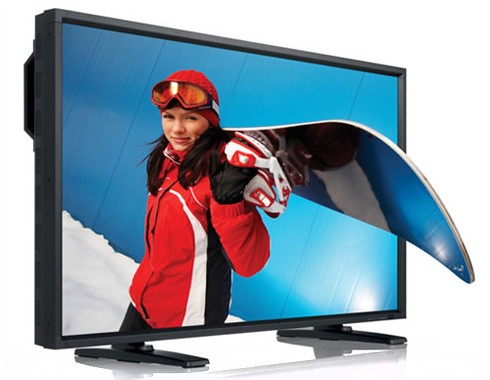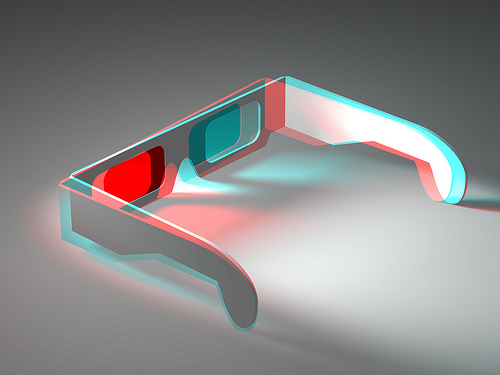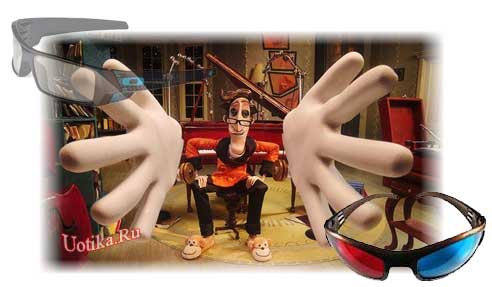2-D or 3-D? Research does not show a difference in emotional responses to these formats.
The increasing visual realism of 3-D films is believed to offer viewers the most vivid and realistic impressions - more exciting and intense than in 2-D, because 3-D films are closest to real life. However, psychology researchers from the University of Utah, one of those who usually use video clips in the laboratory to study the emotional state of patients, found that there is no significant difference in human perception between these two formats. The results were published recently in PLoS ONE.

')
The purpose of the study was to test the effectiveness of 3-D films, a new technology that is currently widely used as a research tool, in comparison with 2-D films. Rollers are used in psychological and neuroscience research as a standard method for assessing emotional development. This method is less invasive than other methods, and it is especially useful in studying the emotional responses of young people, for whom emotional well-being is one of the decisive factors for healthy development.
Sheila Crowe, an assistant professor of psychology, said that the results of a large and tightly controlled study show that, as an entertainment medium, the 3-D format cannot provide impressions that are different from impressions after viewing 2-D. “We decided to find out whether technical progress, such as the 3-D format, is an increase in emotional state, especially for young patients who are regularly exposed to high-tech devices in their daily lives,” says Crow. "Both the -2-D and 3-D formats are equally effective in detecting emotional reactions."

How the study was conducted
Researchers examined a person’s emotional state in 408 variations, including sweating, breathing, and cardiovascular reactions, such as heart rate. They are usually used to evaluate emotional reactions.
Of the four films, small plots were chosen, and such that every single video produced the brightest emotions, brighter than those that arise from watching the entire film. Study participants viewed videos in 3-D and 2-D formats for about five minutes. The films were from the following films: “My Bloody Valentine” (caused by emotion - fear), “Ugly Me” (enthusiasm, fun), “Rapunzel: A Tangled Story” (sadness) and “Polar Express” (awe or excitement). For watching movies, participants were randomly selected. Viewing was carried out in different designs and sequences and, of course, in different formats. Complicated viewing configurations allowed researchers to compare not only the emotional reactions of the participants in the experiment, but also the reactions from each of the formats, as well as to draw other scientific and useful conclusions.

Overall, the results showed several significant differences between the physiological responses to the films. When taking into account a large number of statistical tests, only one difference was noticed between the responses to the formats - a large number of skin-electrical reactions (sweating) during the exciting scene from the movie “Polar Express” in 3-D format. The researchers believe that this is probably due to the fact that its content was of particularly high quality, with the most 3-D effects than the others.
The general conclusion is that individual differences in the character traits of the participants, differences in individual anxiety ability, their inability to control emotional reactions or the search for “thrills” do not affect the psychological or physiological perception of 3-D viewing. And in general, there are no obvious differences in the emotional perception of the formats, so 2-D, as before, is just as effective for the emotional viewing of the long-awaited film.
The article was prepared by the team Telebreeze Team
Our Facebook and Twitter page

')
The purpose of the study was to test the effectiveness of 3-D films, a new technology that is currently widely used as a research tool, in comparison with 2-D films. Rollers are used in psychological and neuroscience research as a standard method for assessing emotional development. This method is less invasive than other methods, and it is especially useful in studying the emotional responses of young people, for whom emotional well-being is one of the decisive factors for healthy development.
Sheila Crowe, an assistant professor of psychology, said that the results of a large and tightly controlled study show that, as an entertainment medium, the 3-D format cannot provide impressions that are different from impressions after viewing 2-D. “We decided to find out whether technical progress, such as the 3-D format, is an increase in emotional state, especially for young patients who are regularly exposed to high-tech devices in their daily lives,” says Crow. "Both the -2-D and 3-D formats are equally effective in detecting emotional reactions."

How the study was conducted
Researchers examined a person’s emotional state in 408 variations, including sweating, breathing, and cardiovascular reactions, such as heart rate. They are usually used to evaluate emotional reactions.
Of the four films, small plots were chosen, and such that every single video produced the brightest emotions, brighter than those that arise from watching the entire film. Study participants viewed videos in 3-D and 2-D formats for about five minutes. The films were from the following films: “My Bloody Valentine” (caused by emotion - fear), “Ugly Me” (enthusiasm, fun), “Rapunzel: A Tangled Story” (sadness) and “Polar Express” (awe or excitement). For watching movies, participants were randomly selected. Viewing was carried out in different designs and sequences and, of course, in different formats. Complicated viewing configurations allowed researchers to compare not only the emotional reactions of the participants in the experiment, but also the reactions from each of the formats, as well as to draw other scientific and useful conclusions.

Overall, the results showed several significant differences between the physiological responses to the films. When taking into account a large number of statistical tests, only one difference was noticed between the responses to the formats - a large number of skin-electrical reactions (sweating) during the exciting scene from the movie “Polar Express” in 3-D format. The researchers believe that this is probably due to the fact that its content was of particularly high quality, with the most 3-D effects than the others.
The general conclusion is that individual differences in the character traits of the participants, differences in individual anxiety ability, their inability to control emotional reactions or the search for “thrills” do not affect the psychological or physiological perception of 3-D viewing. And in general, there are no obvious differences in the emotional perception of the formats, so 2-D, as before, is just as effective for the emotional viewing of the long-awaited film.
The article was prepared by the team Telebreeze Team
Our Facebook and Twitter page
Source: https://habr.com/ru/post/236285/
All Articles